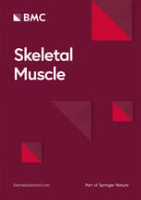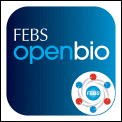
JOURNAL OF MUSCLE RESEARCH AND CELL MOTILITY
Scope & Guideline
Illuminating the Pathways of Muscle Research and Cell Motility
Introduction
Aims and Scopes
- Muscle Physiology and Biomechanics:
The journal publishes studies that explore the fundamental principles of muscle contraction, force generation, and mechanical properties. This includes investigations into the molecular and cellular mechanisms underlying muscle function. - Muscle Pathology and Disease Mechanisms:
Research addressing various muscle disorders, including muscular dystrophies and cardiomyopathies, is a core focus. This encompasses studies on genetic mutations, cellular responses, and therapeutic interventions. - Molecular and Cellular Biology of Muscle:
The journal emphasizes the molecular pathways involved in muscle development, differentiation, and regeneration, including the role of signaling pathways, transcription factors, and post-translational modifications. - Innovative Experimental Techniques:
The use of advanced methodologies such as cryo-electron microscopy, fluorescence imaging, and biomechanical assessments is highlighted, promoting novel approaches to studying muscle at the cellular and molecular levels. - Exercise Physiology and Adaptation:
Research on the effects of various forms of exercise on muscle adaptation, plasticity, and overall health is a significant area of interest, linking physiological responses to muscle performance.
Trending and Emerging
- Calcium Signaling and Muscle Function:
There is an increasing focus on the role of calcium signaling in muscle contraction and pathophysiology, reflecting its critical importance in both health and disease. - Molecular Mechanisms of Muscle Regeneration:
Research on the processes involved in muscle regeneration and recovery, particularly following injury or atrophy, is trending, highlighting the significance of understanding these mechanisms for therapeutic strategies. - Immune Cell Infiltration in Muscle:
Emerging studies are examining the role of immune cell profiles in muscle tissue, especially in relation to exercise and muscle pathology, indicating a growing recognition of the immune system's impact on muscle health. - MicroRNA and Gene Regulation in Muscle:
The exploration of microRNAs and their regulatory roles in muscle biology is becoming more prevalent, suggesting a shift towards understanding post-transcriptional control in muscle function and disease. - Translational Research and Therapeutics:
There is a notable increase in translational studies aimed at developing therapeutic interventions for muscle diseases, reflecting a broader commitment to applying research findings to clinical settings.
Declining or Waning
- Invertebrate Muscle Physiology:
Research pertaining to invertebrate muscle systems has decreased, suggesting a shift towards more mammalian and human muscle studies, possibly due to increased relevance and applicability of findings. - Basic Histology and Anatomy of Muscle:
Papers focusing solely on descriptive studies of muscle histology and anatomy have become less frequent, indicating a trend towards studies that integrate functional and mechanistic insights. - Traditional Exercise Modalities:
Studies centered around conventional exercise modalities without innovative approaches or insights into underlying mechanisms are less common, reflecting a preference for research that connects exercise with molecular and cellular adaptations.
Similar Journals

Skeletal Muscle
Illuminating the path to breakthroughs in muscle health.Skeletal Muscle is a prestigious open access journal published by BMC, dedicated to advancing the field of muscle biology and its associated disciplines. With an ISSN of 2044-5040, this journal has consistently been a beacon of knowledge and innovation since its inception in 2011. Based in the United Kingdom, Skeletal Muscle has established an impressive reputation as reflected in its category quartile rankings for 2023, achieving Q1 status in Cell Biology, Molecular Biology, and Orthopedics and Sports Medicine. This esteemed journal holds notable Scopus rankings, including a remarkable 12th place out of 321 in Orthopedics and Sports Medicine, positioning it in the 96th percentile. The journal is committed to disseminating high-quality, peer-reviewed research that fosters collaboration among scholars, healthcare professionals, and students alike. With a mission to explore the intricate biological mechanisms underlying skeletal muscle physiology and its impact on health and disease, Skeletal Muscle plays a vital role in shaping the future of research in this critical area, ensuring that cutting-edge findings are accessible to all.

AMERICAN JOURNAL OF PHYSIOLOGY-LUNG CELLULAR AND MOLECULAR PHYSIOLOGY
Fostering breakthroughs in lung cellular and molecular research.AMERICAN JOURNAL OF PHYSIOLOGY-LUNG CELLULAR AND MOLECULAR PHYSIOLOGY, published by the American Physiological Society, stands as a prominent peer-reviewed journal dedicated to advancing the field of lung cellular and molecular physiology. With an impressive impact factor, the journal serves as a crucial platform for disseminating high-quality research focused on the intricate mechanisms underlying pulmonary function and disease. Established in 1989, this journal has consistently ranked within the top quartiles across various categories, including Q1 in Physiology and Pulmonary and Respiratory Medicine, highlighting its significance in the scientific community. The journal covers a wide scope of topics pertinent to cell biology and physiology, catering to the needs of researchers, professionals, and students seeking to explore and contribute to this vital area of study. Although currently not offering open access, it provides comprehensive access options for subscribers, ensuring that vital research is communicated effectively to the global scientific community. With a commitment to fostering innovation and inspiring future studies, the AMERICAN JOURNAL OF PHYSIOLOGY-LUNG CELLULAR AND MOLECULAR PHYSIOLOGY remains an essential resource for those engaged in lung research.

Molecular Cell
Pioneering Discoveries in Cell and Molecular Biology.Molecular Cell, published by Cell Press, is a leading journal in the fields of cell biology and molecular biology. Established in 1997, this prestigious journal boasts a significant impact within the scientific community, evidenced by its impressive 2023 Scopus rankings, placing it in the top 2% of its field (Rank #10/410 in Molecular Biology, Rank #12/285 in Cell Biology). With a focus on cutting-edge research that bridges the gap between molecular genetics and cellular function, Molecular Cell serves as an essential platform for the dissemination of vital findings and innovative methodologies. Although it follows a traditional publishing model without Open Access options, its rigorous peer-review process and high standards ensure that articles published within these pages are of the utmost quality, making it an invaluable resource for researchers, professionals, and students alike seeking to stay at the forefront of scientific discovery. The journal's address is 50 Hampshire St, Floor 5, Cambridge, MA 02139, United States, reinforcing its commitment to fostering scientific excellence and collaboration.

MUSCLE & NERVE
Fostering Innovation in Neuromuscular ScienceMUSCLE & NERVE is a prestigious journal dedicated to the exploration and advancement of knowledge in the fields of neurology, cellular and molecular neuroscience, and physiology. Published by Wiley, this journal has been a crucial resource for researchers and practitioners since its inception in 1978, with an impressive convergence of studies anticipated through 2024. With an Impact Factor reflecting its relevance and influence—ranking in the Q2 and Q3 quartiles across multiple categories, including clinical neurology and medical physiology—MUSCLE & NERVE offers a rigorous peer-reviewed platform for groundbreaking research. It holds a respected position in Scopus rankings, illustrating its commitment to excellence and innovation in medicine and neuroscience. As a non-open access journal, it provides valuable resources for professionals seeking to further their understanding of neuromuscular physiology and related disciplines. The journal aims to foster dialogue and disseminate knowledge that advances the field, making it an indispensable tool for academics and clinicians alike.

JOURNAL OF SPORTS MEDICINE AND PHYSICAL FITNESS
Pioneering Discoveries in Physical Fitness and TherapyJOURNAL OF SPORTS MEDICINE AND PHYSICAL FITNESS, published by EDIZIONI MINERVA MEDICA, stands as a notable peer-reviewed journal dedicated to advancing knowledge within the fields of sports medicine, physical fitness, and rehabilitation. Established in 1962, this journal has cultivated a significant reputation for its rigorous scholarship, evident in its category quartiles—ranking Q2 in Physical Therapy, Sports Therapy and Rehabilitation, and Q3 in both Orthopedics and Sports Medicine and Sports Science. With a commitment to disseminating high-quality research, it serves as an invaluable resource for researchers, clinicians, and students seeking to enhance their understanding of the biomechanics, treatment modalities, and preventive measures related to sports-related injuries and physical fitness. Although it is not an open-access journal, it provides comprehensive insights that impact clinical practices and advancements in therapeutic strategies, making it essential reading for professionals aiming to stay at the forefront of sports health research.

Autophagy
Elevating Research in the Science of AutophagyAutophagy is a premier peer-reviewed journal published by Taylor & Francis, Inc. in the United States, focusing on advances in the fields of Cell Biology and Molecular Biology. With an impressive impact factor reflected in its Q1 ranking in both categories, Autophagy stands as a vital resource for researchers and professionals dedicated to understanding the intricate mechanisms of cellular degradation and recycling. The journal has been a cornerstone of scientific communication since its inception in 2005, continuing to flourish through 2024, fostering collaboration and innovation in the study of autophagic processes. Although it does not currently offer Open Access options, the journal remains highly regarded for its rigorous peer-review process and its commitment to publishing high-quality, impactful research. By bridging fundamental research with clinical applications, Autophagy plays a crucial role in advancing our understanding of various diseases, making it an essential tool for scholars and practitioners in the biomedical field.

FEBS Open Bio
Nurturing collaboration in the evolving landscape of biosciences.FEBS Open Bio is a leading open-access journal published by Wiley, dedicated to advancing our understanding of biochemistry, genetics, and molecular biology. Since its inception in 2011, this journal has provided a robust platform for researchers to share their findings with a wider audience, ensuring the dissemination of high-quality scientific knowledge. With an impact factor reflecting its stature in its field, FEBS Open Bio is ranked #77 out of 221 in general biochemistry, genetics, and molecular biology, placing it in the 65th percentile among its peers. This journal serves as an essential resource for professionals, researchers, and students alike, fostering collaboration and innovation within the scientific community. The commitment to open access not only enhances visibility but also promotes transparency in research, making it a vital contributor to the ongoing dialogue in biochemical and molecular biological sciences. For those looking to stay at the forefront of research developments, FEBS Open Bio is a key publication addressing the latest trends and discoveries in the field.

Function
Pioneering discoveries that drive the evolution of healthcare.Function is a pioneering open access academic journal published by Oxford University Press, dedicated to advancing research in the fields of Cancer Research, Cell Biology, Molecular Medicine, and Physiology. Since its inception in 2020, this journal has quickly established itself as a vital resource for researchers and professionals alike, achieving a commendable impact factor in the 2023 rankings, where it stands in the Q2 quartile across multiple categories. Located in the heart of the United Kingdom, Function aims to foster a global exchange of knowledge by providing free and unrestricted access to cutting-edge research, facilitating collaboration and innovation within the scientific community. With a robust focus on emerging discoveries and interdisciplinary approaches, this journal encourages contributions that unravel the complexities of biological functions, paving the way for transformative advancements in healthcare and related sciences. As it converges from 2020 to 2024, Function continues to be an invaluable platform for disseminating research that has the potential to shape the future of medicine and biology.

Acta Physiologica
Connecting Researchers through Open Access KnowledgeActa Physiologica is a premier, peer-reviewed journal published by WILEY, dedicated to the dissemination of high-quality research across the field of physiology. With an impressive impact factor reflective of its Q1 category ranking in Physiology for 2023, this journal is a vital resource for researchers, professionals, and students alike, seeking to explore the complexities of biological systems. The journal is indexed with a commendable Scopus rank of #18 out of 193 in its category, placing it within the top 10% of its field, which underscores its influence and citation frequency within the academic community. Acta Physiologica publishes a variety of articles that address fundamental physiological concepts, innovative methodologies, and cross-disciplinary research. With its open access options, the journal ensures that cutting-edge knowledge is readily accessible, fostering an environment of collaboration and advancement in the study of physiology. Spanning from 2006 to 2024, the journal continues to be at the forefront of physiological research and education, encouraging the global sharing of knowledge through its comprehensive content.

BIOLOGY OF THE CELL
Fostering dialogue in the dynamic field of cell biology.BIOLOGY OF THE CELL is a prominent academic journal published by Wiley, dedicated to advancing the field of cellular biology through the dissemination of innovative research and insights. With its ISSN (0248-4900) and E-ISSN (1768-322X), this journal has been a vital resource since its inception in 1981 and is set to continue its scholarly contributions until 2024. Positioned within the Q3 quartile in Cell Biology and Q2 in Medicine (miscellaneous) as of 2023, BIOLOGY OF THE CELL is recognized for its rigorous peer-review process and its commitment to high-quality publication in critical areas such as biochemistry, genetics, and molecular biology. Although the journal does not currently offer open access options, it remains accessible through the Wiley platform, ensuring that researchers, professionals, and students can benefit from its rich repository of knowledge. By linking fundamental cellular processes with broader medical implications, this journal serves as a critical platform for fostering dialogue and innovation in cellular research, making it an essential read for anyone engaged in the life sciences.